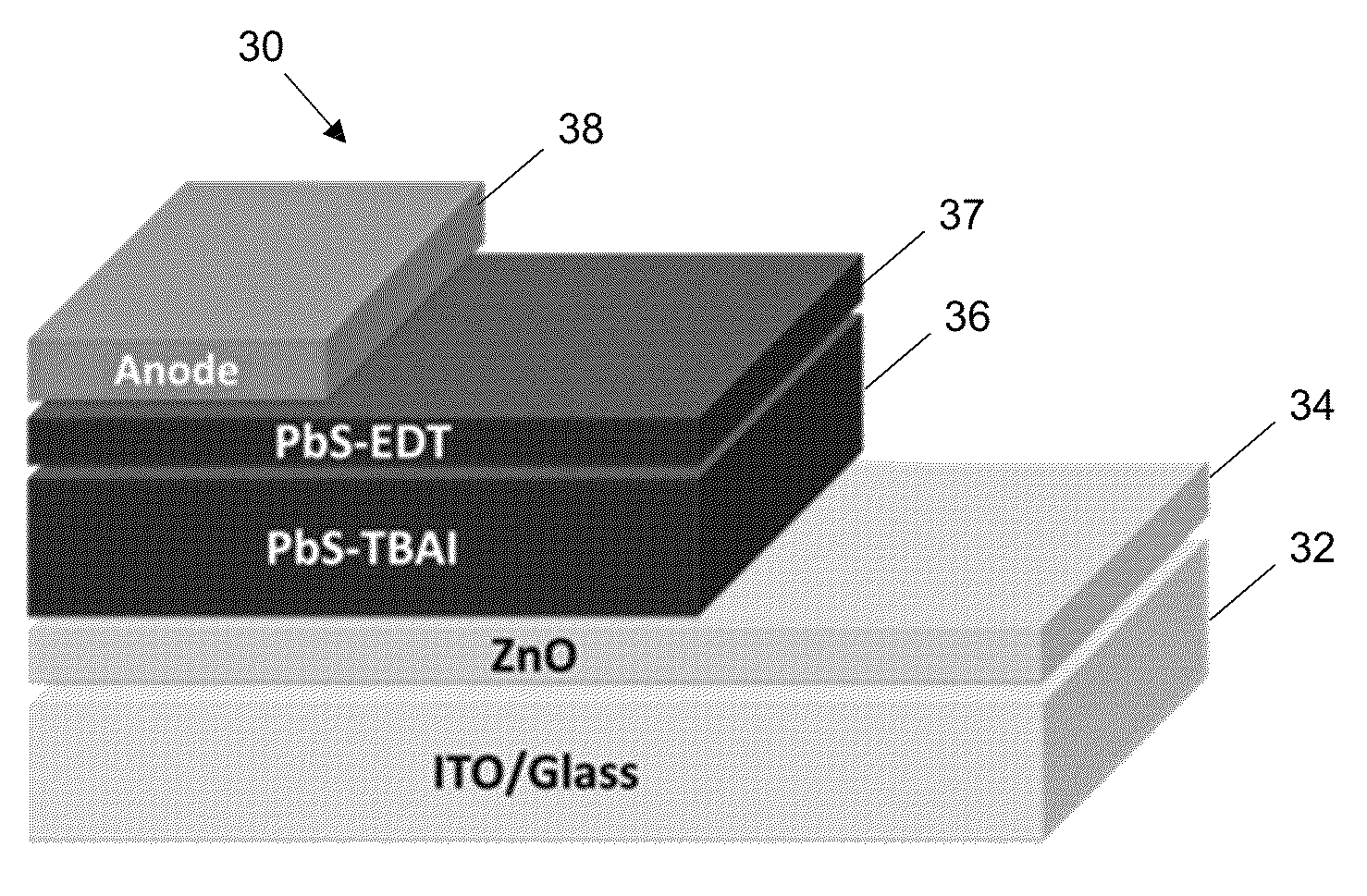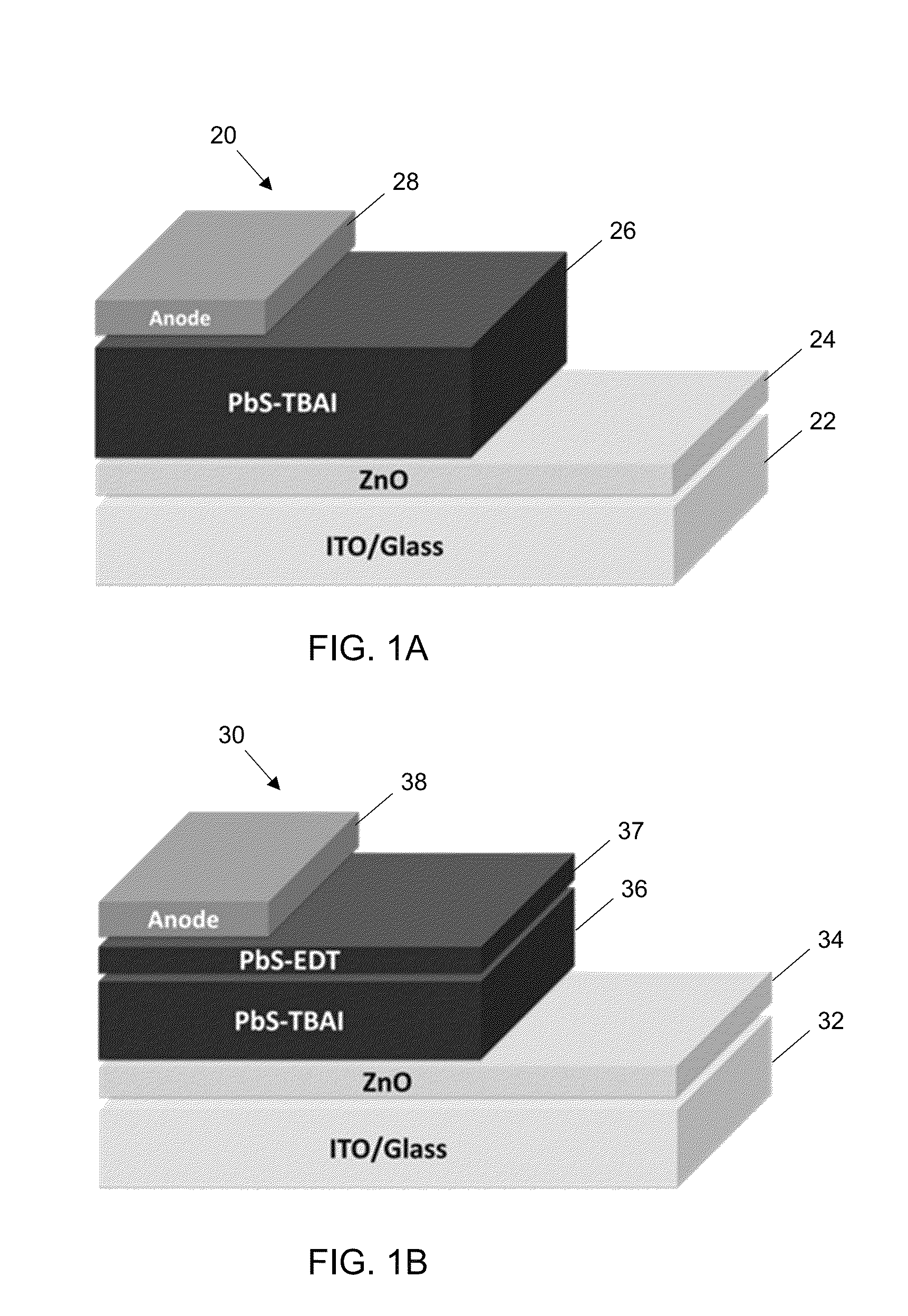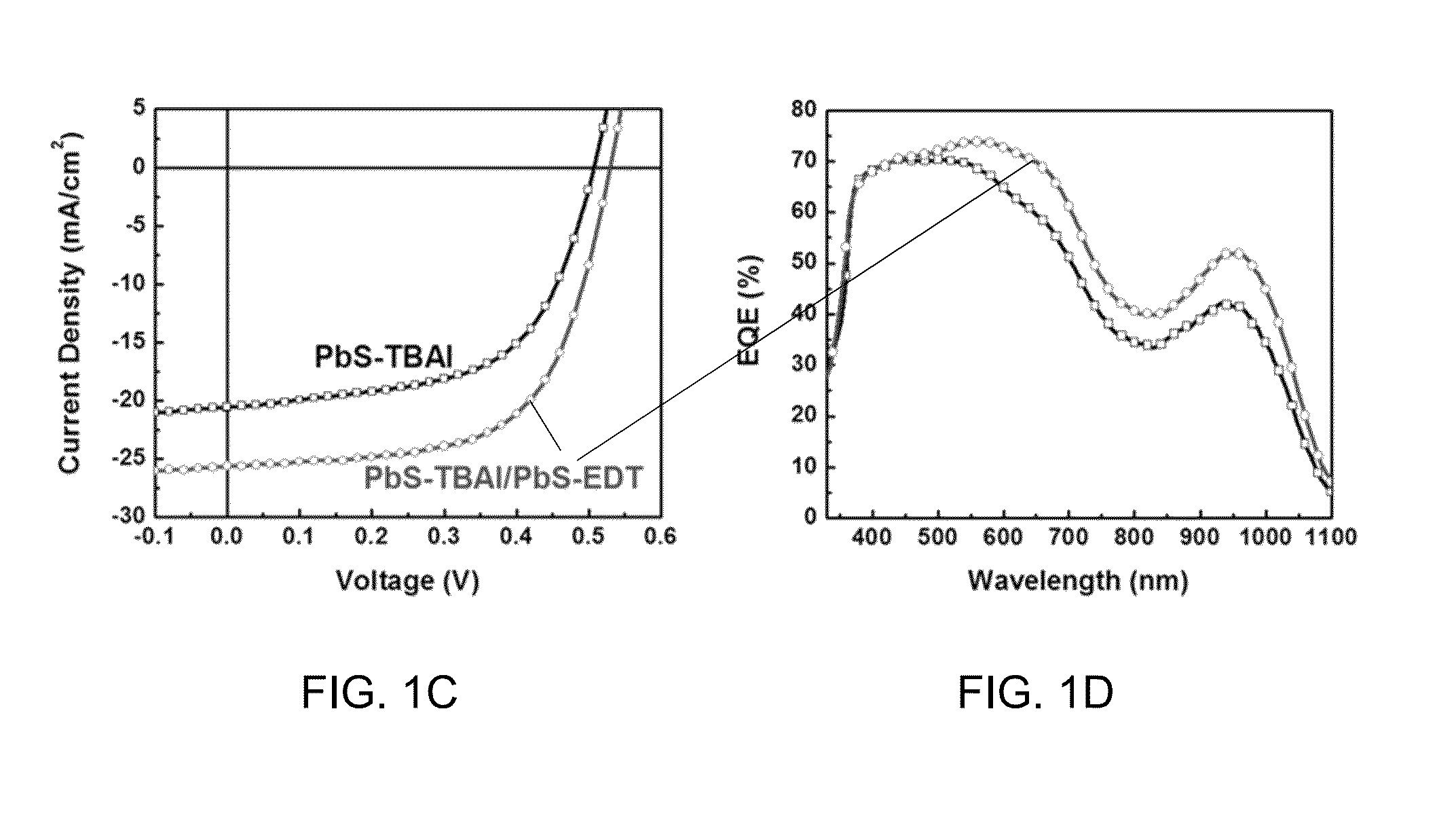Quantum dot solar cells with band alignment engineering
a solar cell and band alignment technology, applied in the field of solar cells, can solve the problems of poor air stability, increase manufacturing complexity and cost, and achieve the effect of facilitating hole extraction and facilitating hole extraction
- Summary
- Abstract
- Description
- Claims
- Application Information
AI Technical Summary
Benefits of technology
Problems solved by technology
Method used
Image
Examples
Embodiment Construction
[0031]Disclosed herein are quantum dot (QD) solar cells that can be fabricated using solution processing. Such solar cells fulfill the goals of high efficiency, low-temperature fabrication conditions, and good atmospheric stability. For example, QD solar cells may be fabricated using room-temperature solution-processed ZnO / PbS. By engineering the band alignment of the QD layers through the use of different ligand treatments, a certified efficiency of 8.55% has been reached. Furthermore, the performance of unencapsulated devices remains unchanged for over 150 days of storage in air. This material system introduces a new approach towards the goal of high-performance air-stable solar cells compatible with simple solution processes and deposition on flexible substrates.
[0032]Near-infrared PbS QDs composed of earth-abundant elements are promising candidates for photovoltaic applications because of a tunable energy bandgap that covers the optimal bandgap range for single and multi-junctio...
PUM
 Login to View More
Login to View More Abstract
Description
Claims
Application Information
 Login to View More
Login to View More - R&D
- Intellectual Property
- Life Sciences
- Materials
- Tech Scout
- Unparalleled Data Quality
- Higher Quality Content
- 60% Fewer Hallucinations
Browse by: Latest US Patents, China's latest patents, Technical Efficacy Thesaurus, Application Domain, Technology Topic, Popular Technical Reports.
© 2025 PatSnap. All rights reserved.Legal|Privacy policy|Modern Slavery Act Transparency Statement|Sitemap|About US| Contact US: help@patsnap.com



